Nothing allows me to forget about the cold temperatures of winter quicker, than spotting the surface rings from trout feeding on Midges or Blue Winged Olives.
It’s not an everyday occurrence by any means, but when it happens, it feels like someone turns the heat up a few notches, and I’m instantly warmed head to toe. When we think about hitting trout water during the winter months, most of us don’t typically think about fishing dry flies. It’s true that day in and day out, most anglers will find their nymphs and streamers to be much more productive, but every once in a while, when luck is on our side, we can find ourselves smack dab in the middle of a winter hatch, with trout rising all around us. It’s during these special two hour windows of trout fishing, that the winter can provide us some of the most rewarding catches of the year. That is, of course, if we decided to bet against the odds, and pack our dry fly box.
I’ll gladly give up catching numbers of fish during the winter, in exchange for taking a handful of fish on the surface with tiny dry flies. The trout don’t even have to be all that big either. They just need to give me a pretty rise and tug my line a few good times. I guess a lot of it has to do with the fact that I believe hatches in the dead of winter, are like rare gifts handed down from above. Gifts that should always be full appreciated by the fly angler, otherwise they may decide to not show up again until spring. Late morning through the afternoon is the time of the day when I find midge and blue winged olive hatches to appear the most, and it’s often the bitter cold days with drizzling rain or snow flurries when the hatch decides to show up. Below are six proven winter dry flies and emergers that have served me well over the years. All you need to do is downsize your tippet and rig them up, with a standard dry fly/dropper rig.
Cannon’s Snowshoe Hare BWO Emerger
I’ll never forget working a pod of rising fish during the winter five or six years with a first-time client of mine. We had managed one trout right off the bat, but after that, the trout wanted nothing to do with us. I tried a half dozen patterns with no success, when my client reached into his box and handed me a size 22, Cannon’s Snowshoe Hare BWO Emerger. It was the first time I’d seen the pattern before, and it honestly didn’t look all that appealing to me because it carried the wear of being stowed in a fly box for several years. That all changed of course, when we took three consecutive trout immediately after tying it on. Cannon also ties the Snowshoe Hare Midge Cluster, which is a phenomenal midge pattern for trout as well. Stock some in your box and break them out when you find yourself dealing with picky trout. I promise they won’t let you down.
Blue Winged Olive – Catskill-Style
With the popularity of parachute dry flies over the years, many of us have lost sight of the trout catching capabilities of Catskill-Style dry fly patterns. A good buddy of mine proved to me a number of times over the years, the value of always having a few of these guys in fly box. I can recall clearly being out fished by him five to one during BWO hatches, when I was using the latest parachute offering and he was fishing a size 22 old school Castskill BWO. Sizing them down, they can work wonders for taking trout that have grown weary of the parachute silhouette, and they float high and are also pretty easy to see.
Hi-Vis Griffith’s Gnat
There’s a reason every trout selection of flies always seems to have a couple Griffith’s Gnats in it. They imitate midge clusters and trout keep midges on their food menu every day of the year. Much like the Catskill-Style dry flies, I think many fly anglers write off Griffith’s Gnats as uncool and outdated. If you believe that, open the fly box of any fly angler you know that regularly catches trout, and I bet you’ll find at least a few of them in their box. When trout are sipping on midges, or are really spooky, a well presented Griffith’s Gnat will usually get the job done. I recommend the Hi-Vis version for those of you out there that have a tough time seeing tiny dries on the surface.
Harrop’s CDC Biot Dun BWO
I hold the highest respect for Rene Harrop as a fly designer. The majority of his patterns are fish catching machines, and one pattern particularly, that I’ve grown very fond of fishing during BWO hatches, is his Harrop’s CDC Biot Dun BWO. Drop it 20″ off the back of a dry fly and you’re almost guaranteed to catch fish whether you’re on a finicky spring creek or a heavily pressured tailwater. If you tie, I also recommend ribbing the biot with an extra-fine pie of copper or gold wire. It adds a touch of extra segmentation look and flash in the water. Don’t forget to swing the baby at the end of your drift. That’s when the trout will really eat it up.
RS2 Foam Wing Emerger
If you like fishing tiny flies, the RS2 has probably become a staple for you on the water. It’s sparse profile can effectively imitate various baetis and midge species, especially when the size is matched correctly to the naturals on the water. Most of the time, trout find it hard to turn a cheek to this pattern. I’ve personally been fishing the RS2 Foam Wing Emerger this winter with great success. The razor foam that’s incorporated in the pattern, helps keep the fly drifting right in the surface film. Keep an eye out for the Baetis Foam Emerger as well, which utilizes the same type of foam but wears the more traditional bwo colors.
Tiny Klinkhammer
It took me a while for the Klinkhammer style dry fly to catch my attention, and it was actually Louis, who really got me started fishing Klinkhammers. I eventually got tired of him whacking fish standing right next to me in the river, and I finally asked him if he would give me one to tie on the end of my line. Klinkhammers are unique in the fact that the majority of the pattern rides below or in the surface film. Think of them as the hook riding down at and angle in the water as the fly drifts, like an emerger struggling to hatch into an adult. Klinkhammers make great searching patterns when there’s not a hatch in progress and have proven to coax trout to the surface for me when all other patterns failed. I always keep a half dozen 20-22 size Klinkhammers in my box during the winter months.
That’s my list of the six dry fly or emerger Patterns that I always Carry with me during the winter. Drop me a comment and let me know about some of your favorites.
G&G Reader Suggestions
Sedgehammer, Parasol Emerger, CDC Cripple Thor BWO, CDC F-Fly, CDC Shuttlecock, Roy’s Special Emerger (Roy Palm), Loop Wing BWO Emerger
Keep it Reel,
Come fish with us in the Bahamas!
Kent Klewein Gink & Gasoline www.ginkandgasoline.com hookups@ginkandgasoline.com Sign Up For Our Weekly Newsletter!
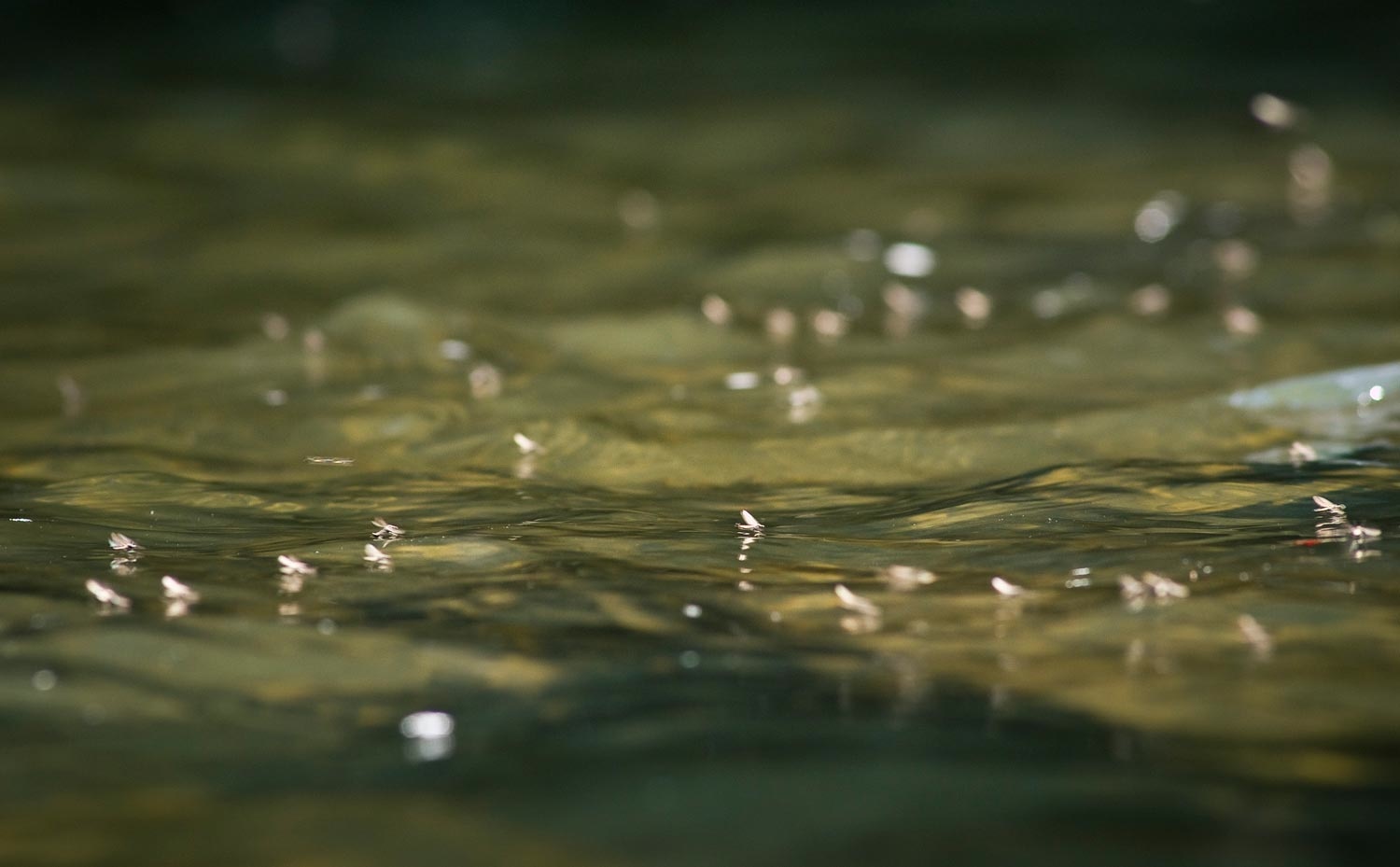
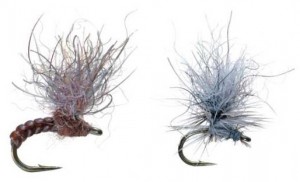
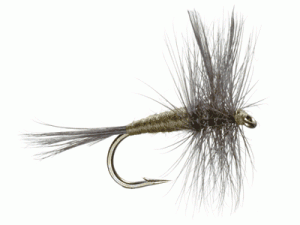
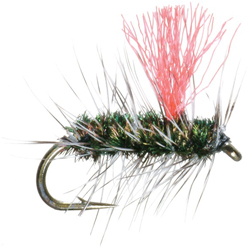
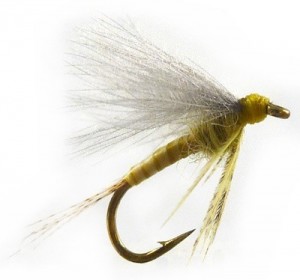
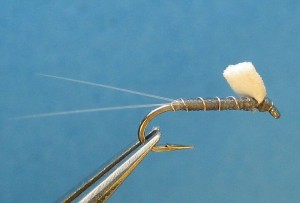
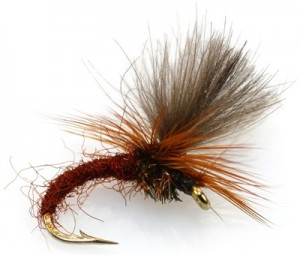
That’s a great list of flies Kent. And you’re right about the RS2. It’s hard to beat a small RS2 in the dead of winter, but I’ve had succes with other bwo patterns as well. Two of my favorite flies to use in the winter are 1) small parasol midges with sparse posts (i know it’s not a true dry fly since the midge sits in the film, but it’s still effective), and 2) Small sedgehammers #18-22. I don’t see the sedgehammer in fly shops near as much, but it’s a great pattern and an easy tie.
Justin,
Thanks for dropping me a couple of your favorite winter time dry flies and emergers. Both are good recommendations. Have a great day my friend.
Kent
Great article! If your local fly shop does not carry some these, is there an online store you would recommend to buy them at?
Thanks, Hayden
Hello Hayden,
Most of those fly patterns you should have no problem finding in the store. I also believe I’ve linked most of the photos and one additional word link for each pattern I referenced in the post to places online that you can purchase them. All you really need to do is google the name and you’ll have no problem finding a place to purchase them online.
Thanks for the comment and following Gink & Gasoline.
Kent
Good group of bugs. The RoyPalms Special Emerger – is a go to for me here in CO. Very versatile bug. You can drowned it or fish it on the surface and it does well in both places. I think it was developed for the frying pan but it fishes well everywhere. Thanks for sharing your favorites.
Jmac,
Thanks for the suggestion. I’ve added it to the list.
Kent
I miss the F-fly and a similar shuttlecock cdc! These are my go to dries in winter, especially in grey colour.
Thanks Jasper,
Added those two great patterns as suggestions for the readers.
Kent
Thanks Kent, keep up the great work! I am reading your blog with pleasure, daily. Mostly in a boring Amsterdam tram….
Very nice list!
I’ve had a lot of success with loop wing bwo emergers this winter. Seems here in CO trout are really liking those even over the rs2 foam wing.
Denis,
Funny you mention the Loop Wing BWO Emerger. I had a list of about 14 patterns that I had put together for the post but I went with only six because I was trying to keep it simple for all the entry-level fly fisherman out there. I weighed it heavy against Harrop’s CDC Biot Dun and it fell short only because of my personal success with that pattern. The loop wing is a great pattern and I’ve caught lots of trout on it and it’s very close to Harrop’s as well. I’m really happy you took the time to suggest it. I’ve added it to the bottom of the post, with all of the other G&G Winter Pattern Suggestions. Cheers
Kent
I like the list. I’ll let you know how they work in Western Canada. I won’t be able to try until Mid March. We’re frozen solid. Looks like ice fishing will have to suffice for now!
Brian,
Sorry to hear that everything is frozen over. Sounds like you need to make a fly fishing trip down south my friend. I’d go nuts if all my water was frozen over. Then again, I could probably get used sitting in a shanty with some tunes, snacks and some good whisky or bourbon. Cheers
Kent
This is one of my favorites during the winter.
https://fbcdn-sphotos-d-a.akamaihd.net/hphotos-ak-frc1/242235_10151504013677003_1675191875_o.jpg
Since I am hopelessly addicted to dry flies, that is what I love about winter/early sping in the northern Rockies – hitting a pod of trout sipping dries. And sometimes surprised by the size of the fish at the end of the line! When I lived in Missoula, there was place right in town that consistently had risers and it was rare to see anyone else out fishing them. Very civilized too – basically from 1:00 to 4:00 in the afternoon.
Kent,
Just got down to this write-up in my in-box. Nice job as usual.
Unless I can identify BWO’s on the surface, I like dropping the old WD40 off a Griffith’s gnat when I am prospecting the occasional winter risers. They work well together for me. Plus the WD40’s are mucho easy to tie in tiny sizes.
Merry Christmas!
Ralph,
That’s a great dry/dropper setup for the winter. In the rare times when the WD-40 seems a little slow, I like a juju baetis in various colors for a backup dropper.
I have to tell you that I’ve thoroughly enjoyed keeping in touch with you via the comment section of G&G. We’er going to have to hit the water together some time in the future. Merry Christmas to you as well my friend.
Kent
Let’s get on the water… just let me know when you can.
Kent,
My son and I both enjoy your posts a lot-he sent me this one early as he gets your daily posts and I get the weekly. Your topics are always of interest and we’re always learning something. I live in Wyoming- he’s in Colorado- your posts end up being a great way to keep us in touch. We’ve been to Andros South twice together- your posts add to our dreams of that as well. Keep up the good work- it’s much appreciated.
Larry
Larry,
That’s great to hear that you and your son use G&G as a platform for fishing conversation. That makes me very happy.
Kent
I am with you the whole way on trout fishing. As a dyed-in-the-wool black bass angler, (and I plan to be always) putting the baitcasting equipment aside and handling a fly fishing outfit is certainly one of the most relaxing ways to enjoy oneself. I caught my first rainbow trout in late May 1967, right after graduating from high school. It is a dilemma for me, but a pleasurable one whether I want to bass fish or chase trout.